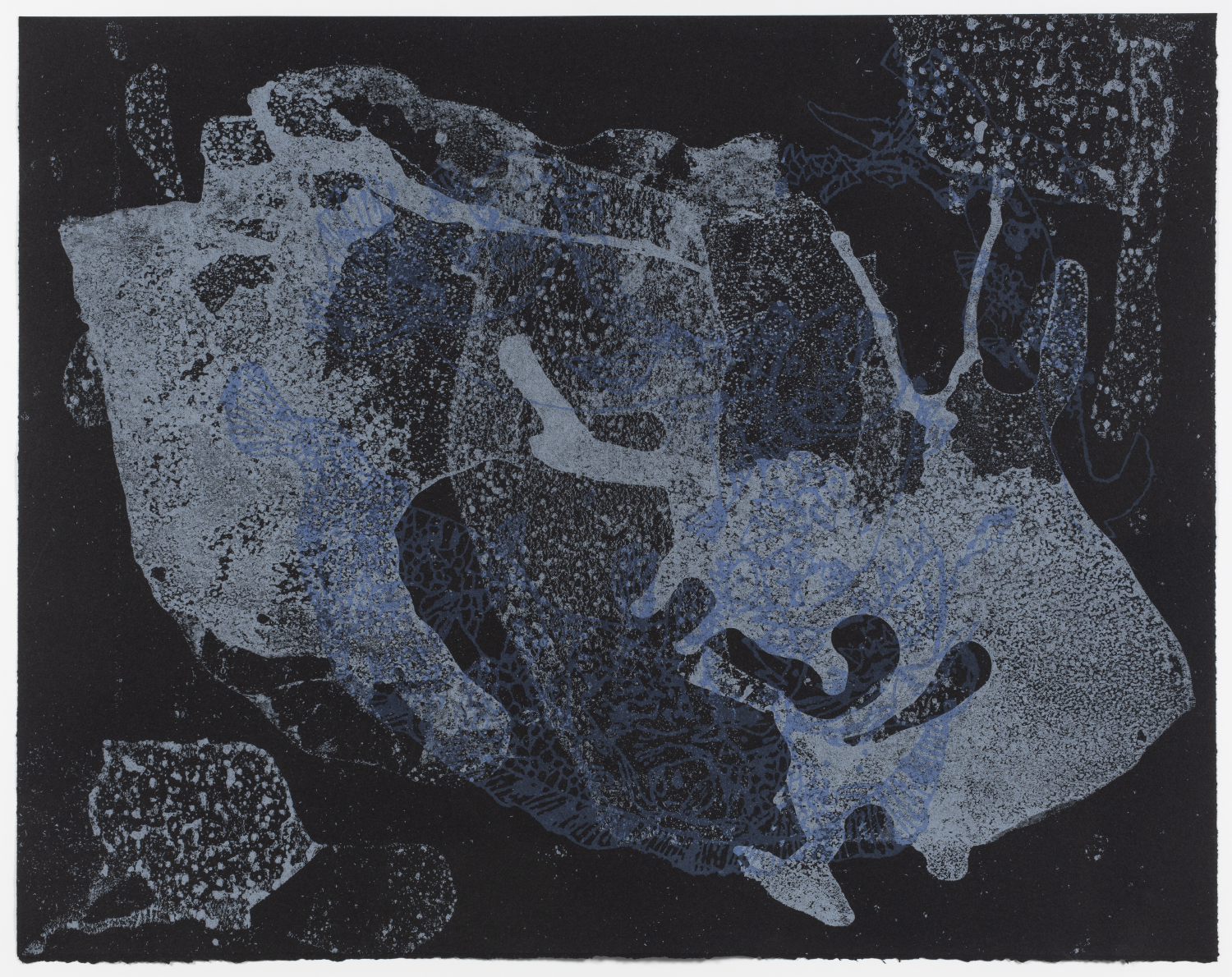Description
Ed Pien, Ahuman Agency
Ed Pien, born in Taipei in 1958 and now practicing in Toronto, has been working with water as a subject since 1985: in discrete and obvious processes, viewing water as material, as political agent, as muse and collaborator. Upon travelling to Halifax in 2017 to produce a print for the NSCAD Lithography Workshop: Contemporary Editions, Ed quickly turned to water, and more specifically, to the Halifax Harbour.
Connecting with experts in the local fishing industry, including a marine conservation specialist and a local fishmonger, Pien contextualized larger political and personal concerns regarding the industrialized world’s use of water toward a specific entity, one of the most endangered species in the Atlantic: the Wolffish. Ed describes the Wolffish as a mesmerizing creature. It is paradoxical and depressing that something so powerful is near extinct. Drawings of the Wolffish visually occupy the background of Pien’s print, eating one another, behaving in volatile and unseen ways.
In the process of making the delicate top layer of the print, Ed engaged in what he describes as “kidnapping”: collecting ocean water from three local sites. This water was then carefully poured on top of clear plastic sheets and given the opportunity to shape its own narrative as it evaporated into the atmosphere. Water is omnipresent; in Pien’s words, it “wants to escape, it doesn’t want to be captured”. What remains in the print is the ghost of water, and debris of its past: primarily salt, bits of organic matter, various microbes and the trace of its interaction with lithographic chemicals. The water used in Pien’s piece has moved on: evaporated into the atmosphere, reconstituted into the oceans, or perhaps back into a human body. This process has deeply political and personal underpinnings for Pien. He explains, “I’m exploring the sentience of water. I have to rethink how I act in this world. In a way, I need to change the language I use to interact with something I originally took as just material. It has no sense of agency when we speak about water as an object for our use”. So, Pien has left a trace. Or, the water has left its own trace, in such a way that its absence can be the inverse, a potent presence; given the agency to tell a story of its trauma. Ghostly imagery has become a visual method for referencing the way trauma acts on an entity in Pien’s practice; “We are creating trauma in the oceans and the environment. The residual is an analogy to the psychological or physical wounds that remain”.
During this time of climate crisis, Pien’s use of water is an intentional gesture to lessen the perceived division between ‘humankind’ and ‘nature’, at a time when we are seeing the visceral effects of this division; our behaviours are affecting the entire biosphere. His print advocates for a shift in material culture: towards thinking of all matter as sentient, storied, and agentic. Pien’s collaboration with water allows for narrative emergences that highlight humankind’s interdependency with ecological systems we often render invisible in a time when our gaze must be fundamentally shifted.
—Brody Weaver
Ed Pien draws inspiration from Asian myths and western tales to create fantastic and sometimes disturbing drawings of other worlds, reminiscent of some of Jerome Bosch’s and Francisco Goya’s works. Focusing on ink and translucent paper, Pien creates sensual installations where the viewer is invited to cross paper corridors and rub close to small, trembling monsters, half-human, half-animal. Born in Taiwan, living in Canada since he was eleven, Ed Pien lives and works in Toronto and is widely known for his drawings, paper cut-out installations.



